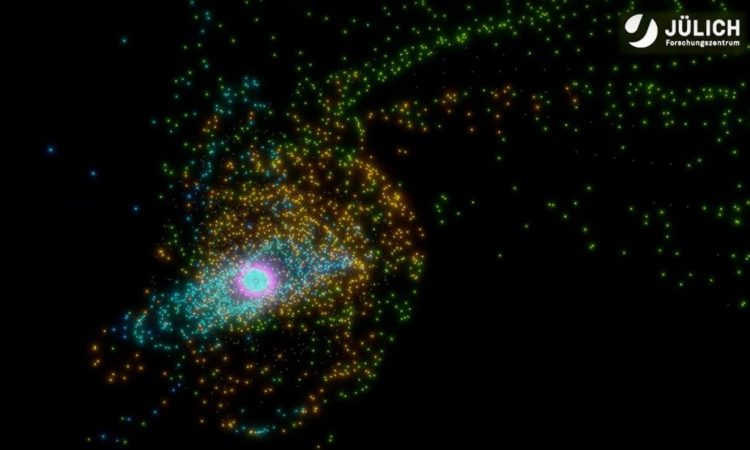
According to new research, a star may have displaced the moons of giant planets such as Jupiter and Saturn.
Billions of years ago, it may have had a close encounter with another passing star. As explained in two new studies published in the journals Nature Astronomy and The Astrophysical Journal Letters, this stellar flyby could explain the mysterious orbits of some objects in our Solar System. An example? The small celestial bodies that linger at its outer limits and even some of the strange moons of our planetary neighbors. The encounter would be close beyond belief. In fact, based on the results, the star would have come within 110 astronomical units of the Sun (AU), or 110 times the distance between the Sun and the Earth. To give you an idea, the Voyager 1 probe has managed to travel 164 AU away from our planet since its launch in 1971.
Advertisement
Details of the new studies
Considering that the closest star known today, Proxima Centauri, is still more than four light years away, this is a rather dramatic near-collision. This perhaps explains the strange orbits of objects found in the outer Solar System. “Many of these so-called trans-Neptunian objects move on eccentric orbits inclined with respect to the planets of the Solar System,” explained the author of the studies Susanne Pfalzner, astrophysicist at the Jülich Research Center in Germany.
The orbits of these objects have an inexplicable inclination
Simply put, the orbits of these objects have an inexplicable inclination. To test whether an “interstellar intruder” could be the cause, the researchers conducted over 3,000 computer simulations. The results were in line with their hypothesis. Not only could they explain two of the most bizarre trans-Neptunian objects that have retrograde orbits (i.e. they orbit in the opposite direction to all the planets in the Solar System), but they could also connect, which at its farthest point is a whopping 937 AU from the Sun.
The results of the studies
“The best explanation for the orbits of external objects that we found with our simulations is a star slightly lighter than our Sun, about 0.8 solar masses,” said study co-author Amith Govind, who is also an FZJ astrophysicist , in the statement. It would be “just under four times the distance of the outermost planet Neptune”.
This encounter could also explain some of the orbits of the solar system’s moons, including that of Saturn Phoebewhose orbit is retrograde and unusually distant. Neighboring gas and ice giants Jupiter and Neptune are also full of such moons. According to this hypothesis, the irregular moons may have once been trans-Neptunian objects, pushed inward by the passing star.
“Some of these objects may have been captured by giant planets as moons,” said Simon Portegies Zwart, co-author of the Nature Astronomy study, in the statement. “This would explain why the outer planets of our Solar System have two different types of moons.”
Read more

